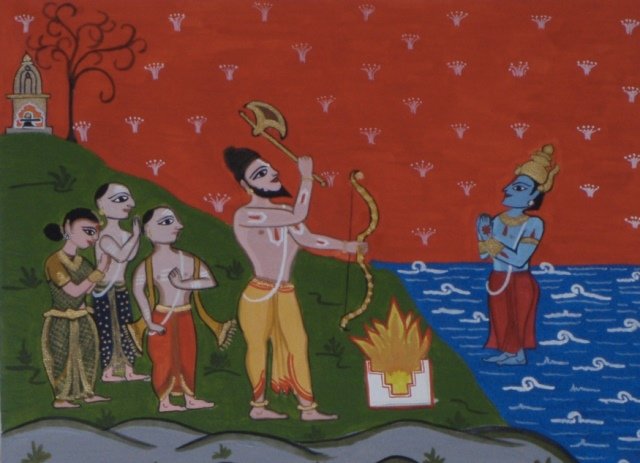
A group of researchers in India conducted this analysis by comparing the genomes of hundreds of Indians from throughout the country. As they write in a paper published today in Proceedings of the National Academy of Science, samples came from "367 unrelated individuals drawn from 18 mainland and two island (Andaman and Nicobar Islands) populations selected to represent geographic, linguistic, and ethnic diversities." Previous studies had suggested that today's Indians came from two ancestral populations, but the new analysis revealed four distinct "haplotypes," or bundles of genetic elements that travel through generations in a package. People with the same haplotypes likely came from the same ancestral groups. The researchers also found a fifth haplotype among people of the Andaman archipelago.
Careful examination of the variations between these haplotypes, compared with haplotypes of other people throughout the world, revealed that India's ancient populations probably came first from Africa. Later waves of settlement came from people who shared genetic similarities with populations in South Central Asia and East Asia. These groups remained genetically distinct, and the linguistic history of India suggests they spoke languages with dramatically different origins. Nevertheless, it appears there was a good deal of intermarriage, which shows up in genomes of people who possess genetic sequences typical of two or more haplotypes.
But then there is a sea change about 1,500 years ago. At that time, the researchers note:
The reign of the ardent Gupta rulers, known as the age of Vedic Brahminism, was marked by strictures laid down in Dharmasastra—the ancient compendium of moral laws and principles for religious duty and righteous conduct to be followed by a Hindu—and enforced through the powerful state machinery of a developing political economy.Especially among the upper castes, endogamy was the only legal option. People had to marry within their castes. And suddenly, we no longer see signs of intermixing between different groups. The researchers were able to measure exactly when endogamy became the rule of the land by looking at subtle shifts in haplotype sequences. With each generation, these sequences are cut into smaller pieces via recombination between chromosomes.
The researchers report there is a startlingly sudden shift where genetic mixing seems to stop. If a person has genetic material from two haplotypes—let's call them Hap1 and Hap2—a shift to endogamy causes far more recombination events in Hap1 than in Hap2. That's because future generations stop intermarrying with people from the Hap1 haplotype, yet they keep getting new copies of the Hap2 haplotype. This keeps Hap2 intact while recombination constantly breaks up the Hap1s.
Using a common system for extrapolating generations from genetic recombination, the researchers estimated "all upper-caste populations, except [one] from Northeast India, started to practice endogamy about 70 generations ago... This time estimate belongs to the latter half of the period when the Gupta emperors ruled large tracts of India (Gupta Empire, 319 - 550 CE)." This genetic shift was most marked among the upper castes who spoke Indo-European languages. Other groups appeared to have stopped intermarrying much later.
By identifying five ancestral populations among contemporary Indians, the researchers have revealed that Indians today are more genetically diverse than we've realized. But they have also shown that social shifts can dramatically affect a nation's genomes. The caste system has consequences that affect people all the way down to their DNA.
Proceedings of the National Academy of Science, 2016. DOI: 10.1073/pnas.1513197113



Reader Comments